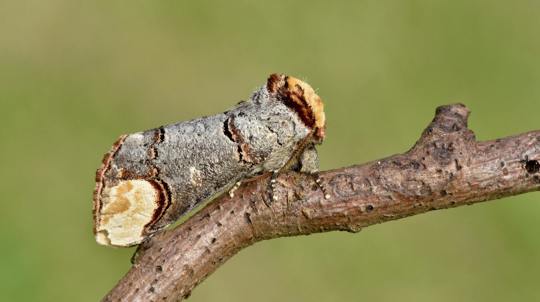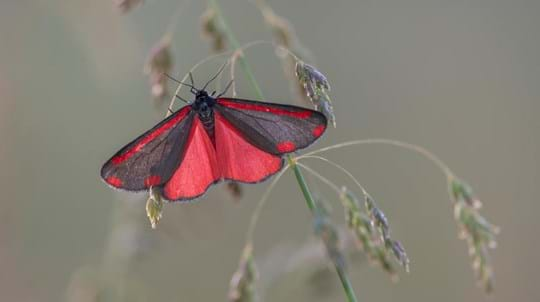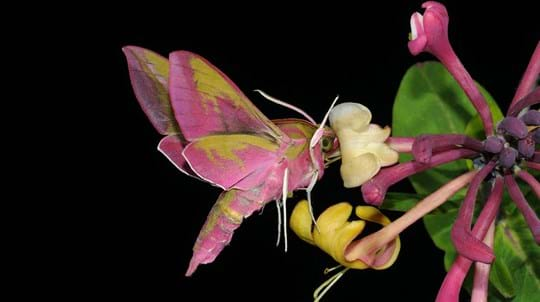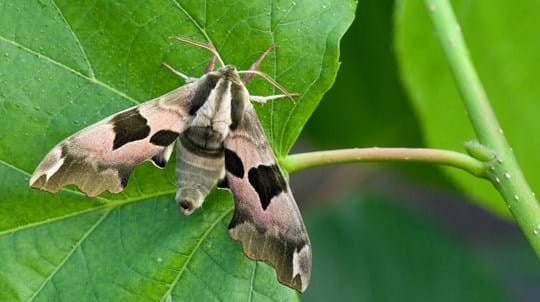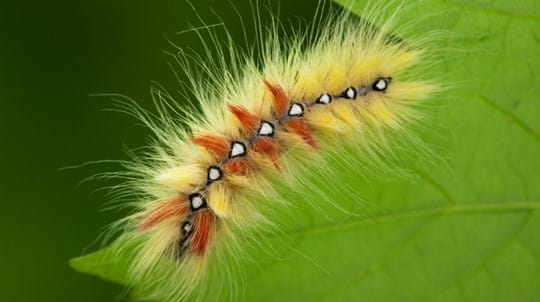
Credit: Malcom Schuyl / Alamy Stock Photo
How do dark crimson underwing moths breed?
Adults are on the wing from late July to early September, looking for a mate. The female lays her eggs on oak trees in August, and they overwinter here until the following April, when the caterpillars hatch.
The caterpillars feed on the oak tree from April until June – munching away under cover of darkness and hiding in crevices in the bark during the day.
The caterpillars pupate in June and July, in a cocoon either attached to the oak foliage or in a gap in the tree bark.




